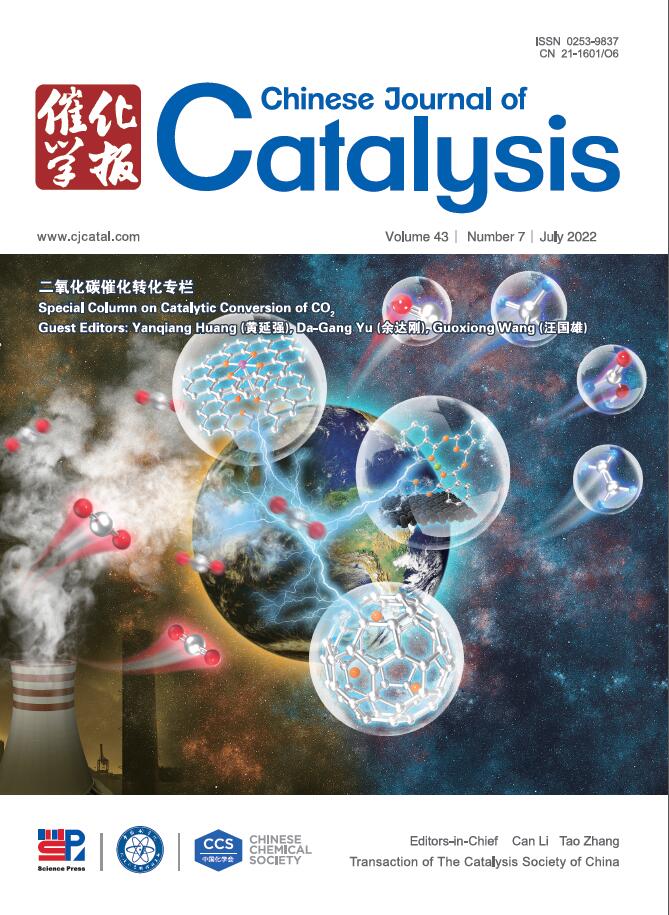Platinum clusters stabilized by zincosilicate zeolite for efficient propane dehydrogenation
IF 15.7
1区 化学
Q1 CHEMISTRY, APPLIED
引用次数: 0
Abstract
Dispersing metals from nanoparticles to clusters is often achieved using ligand protection methods, which exhibit unique properties such as suppressing structure-sensitive side reactions. However, this method is limited by the use of different metal precursor salts corresponding to different ligands. An alternative approach, the ion exchange (IE) method, can overcome this limitation to some extent. Nevertheless, there is still an urgent need to address the stabilization of metals (especially precious metals) by using IE method. Here, we reported a Pt cluster catalyst prepared mainly by anchoring Pt atoms via O located near the framework Zn in zincosilicate zeolites and riveted by zeolite surface rings after reduction (reduced Pt/Zn-3-IE). The catalyst can achieve an initial propane conversion of 26% in a pure propane atmosphere at 550 °C and shows little deactivation even after 7.5 d of operation. Moreover, the alteration of catalyst by the introduction of framework Zn was also highlighted and interpreted.
用硅酸锌沸石稳定铂团簇用于丙烷的高效脱氢
通常使用配体保护方法将金属从纳米颗粒分散到簇中,这种方法具有抑制结构敏感副反应等独特性质。然而,这种方法受到使用不同金属前体盐对应不同配体的限制。另一种方法,离子交换(IE)方法,可以在一定程度上克服这一限制。然而,利用IE方法解决金属(特别是贵金属)的稳定问题仍然是一个迫切的需要。本文报道了一种Pt团簇催化剂,其主要方法是将Pt原子通过O锚定在锌硅酸沸石的骨架Zn附近,并在还原(还原Pt/Zn-3- ie)后由沸石表面环铆接而成。在550℃的纯丙烷气氛中,该催化剂的初始丙烷转化率为26%,即使在运行7.5 d后也几乎没有失活。此外,还对引入骨架Zn对催化剂的改变进行了重点阐述。
本文章由计算机程序翻译,如有差异,请以英文原文为准。
求助全文
约1分钟内获得全文
求助全文
来源期刊

Chinese Journal of Catalysis
工程技术-工程:化工
CiteScore
25.80
自引率
10.30%
发文量
235
审稿时长
1.2 months
期刊介绍:
The journal covers a broad scope, encompassing new trends in catalysis for applications in energy production, environmental protection, and the preparation of materials, petroleum chemicals, and fine chemicals. It explores the scientific foundation for preparing and activating catalysts of commercial interest, emphasizing representative models.The focus includes spectroscopic methods for structural characterization, especially in situ techniques, as well as new theoretical methods with practical impact in catalysis and catalytic reactions.The journal delves into the relationship between homogeneous and heterogeneous catalysis and includes theoretical studies on the structure and reactivity of catalysts.Additionally, contributions on photocatalysis, biocatalysis, surface science, and catalysis-related chemical kinetics are welcomed.
 求助内容:
求助内容: 应助结果提醒方式:
应助结果提醒方式:


